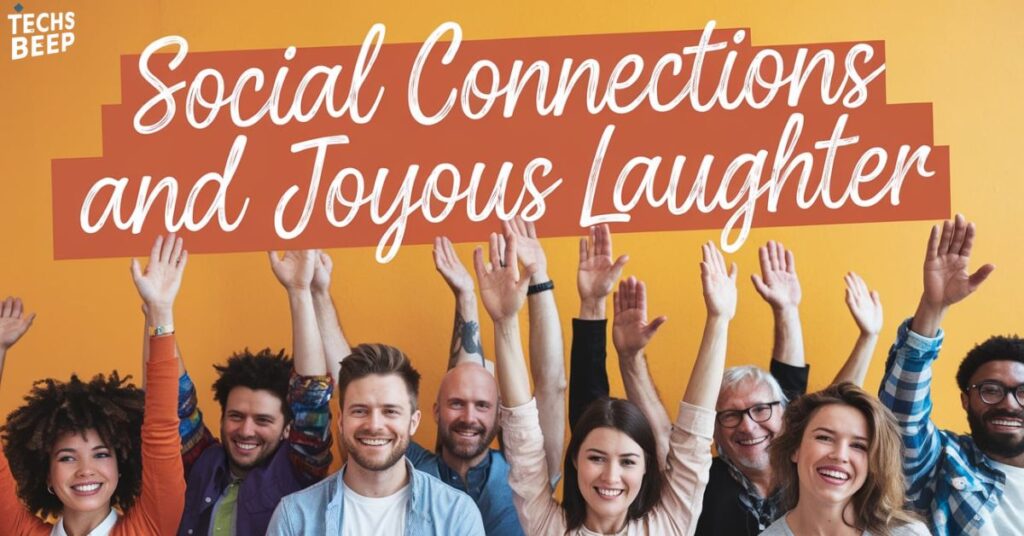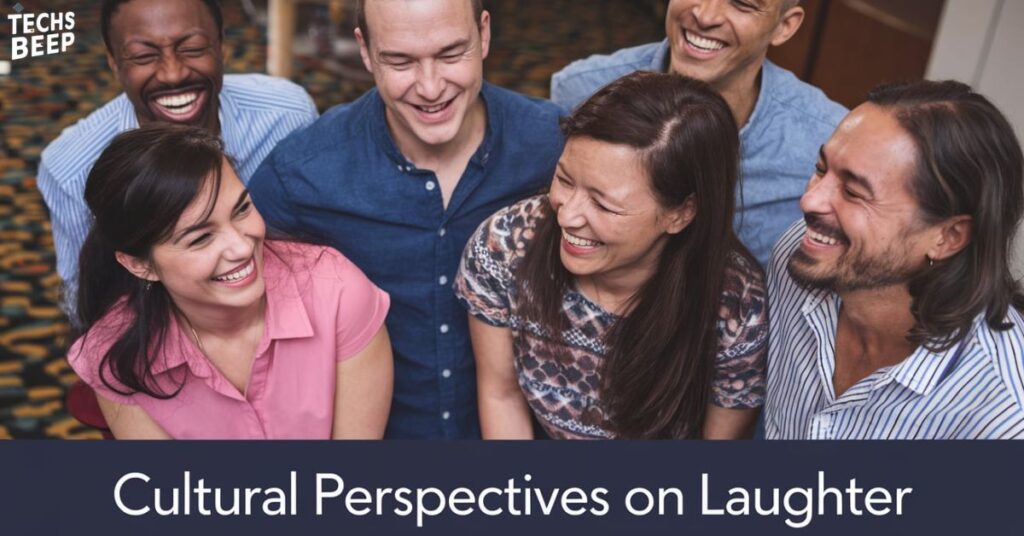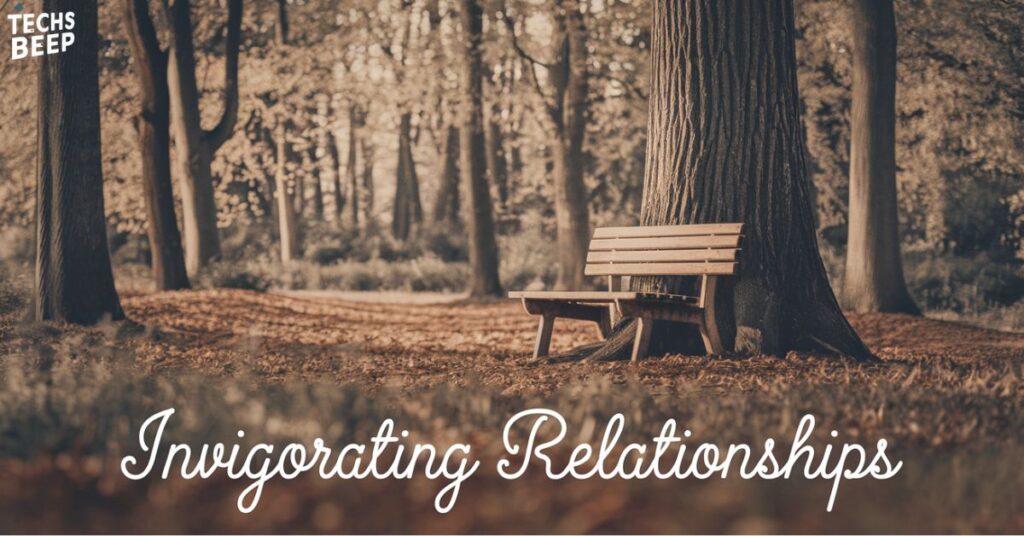Laughter isn’t just a reaction to humor; it’s a powerful force for healing and connection. This universal human experience transcends cultures, ages, and languages, offering a wealth of benefits for our mental, physical, and social well-being.
From boosting our immune system to strengthening relationships, joyous laughter plays a crucial role in our overall health. We’ll examine how it affects our brain chemistry, impacts our physical health, and shapes our social interactions.
So, get ready to crack a smile as we unravel the mysteries of mirth and discover how a good chuckle can transform our lives. Let’s dive into the world of joyous laughter and its remarkable power to heal, connect, and uplift.
The Science of Joyous Laughter
When we laugh, our brain becomes a bustling chemical factory. It releases a cocktail of neurotransmitters that profoundly affect our mood and well-being:
- Dopamine: The “feel-good” hormone
- Endorphins: Natural pain relievers
- Serotonin: Mood regulator
This chemical rush creates a natural high, similar to the effects of some drugs, but without harmful side effects. It’s nature’s way of rewarding us for finding joy in life.
Research shows that laughter also influences our brain waves. During a hearty laugh, our brain exhibits similar patterns to those seen during meditation, promoting a state of relaxation and mindfulness.
Let’s breakdown how laughter affects different parts of our brain:
| Brain Region | Effect of Laughter |
| Frontal Lobe | Triggers release of dopamine |
| Limbic System | Regulates emotional responses |
| Amygdala | Reduces fear and anxiety |
| Hippocampus | Enhances memory formation |
Moreover, laughter isn’t just a solo act. Mirror neurons in our brain fire when we see others laughing, making mirth contagious and fostering social connections.
Physical Health Benefits of Joyous Laughter
Joyous laughter isn’t just good for our mental state; it provides a wealth of physical health benefits too. Let’s break down how a good chuckle can boost our bodily well-being:
- Immune System Boost: Laughter increases the production of antibodies and activates protective cells like T-lymphocytes. This enhancement helps our body fight off infections more effectively.
- Cardiovascular Health: A hearty laugh gets our heart pumping, improving blood flow and reducing the risk of heart disease. It’s like a mini cardio workout!
- Pain Relief: The endorphins released during laughter act as natural painkillers, providing temporary relief from chronic pain conditions.
- Respiratory Benefits: Laughing exercises our diaphragm and abdominal muscles, increasing lung capacity and oxygen intake.
- Stress Reduction: Laughter lowers stress hormones like cortisol and adrenaline, promoting a state of relaxation.
Have a quick look at some measurable physical effects of joyous laughter:
- Blood pressure reduction: Up to 6 mm Hg
- Increased heart rate: 10-20% during laughter
- Calories burned: Up to 50 calories per 10-15 minutes of laughter
Dr. William Fry, a pioneer in laughter research, famously stated: “Laughter is like internal jogging. It moves your internal organs around and enhances respiration.“
Case Study: The Norman Cousins Effect Norman Cousins, a journalist, famously used laughter to manage his ankylosing spondylitis. He found that 10 minutes of belly laughter gave him two hours of pain-free sleep. His experience sparked interest in the medical community about laughter’s healing potential.
Social Connections and Joyous Laughter

Joyous laughter is a social lubricant, greasing the wheels of human interaction and strengthening our bonds. It’s a universal language that can bridge gaps and create instant connections. Here’s how Joyous laughter enhances our social lives:
- Building Trust: Shared laughter creates a sense of intimacy and trust between people.
- Conflict Resolution: Humor can diffuse tense situations and make difficult conversations easier.
- Group Cohesion: Laughter in groups promotes a sense of belonging and shared experience.
- Attractiveness: People who can make others laugh are often perceived as more attractive and charismatic.
Robert Provine, a neuroscientist and laughter researcher, found that we’re 30 times more likely to laugh in social situations than when alone. This highlights laughter’s crucial role in human interaction.
“Laughter is the shortest distance between two people.” – Victor Borge
Joyous laughter’s social benefits extend to various settings:
- Family Dynamics: Families that laugh together often report stronger bonds and better communication.
- Friendships: Shared humor is a cornerstone of many lasting friendships.
- Romantic Relationships: Couples who laugh together report higher satisfaction and longevity in their relationships.
In the digital age, joyous laughter has found new avenues for connection. Memes, funny videos, and humorous social media posts serve as modern-day social glue, allowing us to share laughs across vast distances.
Laughter in the Workplace
Incorporating humor and joyous laughter in professional settings can transform the work environment. Here’s how a dash of mirth can boost productivity and job satisfaction:
- Stress Reduction: Laughter helps employees manage work-related stress more effectively.
- Creativity Boost: A lighthearted atmosphere can lead to more innovative thinking and problem-solving.
- Team Building: Shared laughter strengthens team bonds and improves collaboration.
- Improved Communication: Humor can make difficult messages easier to deliver and receive.
- Increased Productivity: Happy employees tend to be more productive and engaged in their work.
Some companies have recognized the power of joyous laughter and incorporated it into their culture:
- Google has designated “fun areas” in their offices, including ball pits and slides.
- Zappos encourages employees to share funny stories and jokes during team meetings.
- Southwest Airlines is known for its humorous in-flight announcements, boosting both customer and employee satisfaction.
A study by Wharton Business School found that teams who share a good laugh during meetings are more likely to propose new ideas and solve problems creatively.
Have a quick look at how laughter impacts workplace metrics:
| Metric | Impact of Laughter |
| Employee Satisfaction | Up to 25% increase |
| Productivity | 10-15% boost |
| Sick Days | 15% reduction |
| Team Collaboration | 30% improvement |
“I have seen what a laugh can do. It can transform almost unbearable tears into something bearable, even hopeful.” – Bob Hope
Remember, the goal isn’t to turn the office into a comedy club, but to create an environment where smiles and laughter are welcome alongside hard work and professionalism.
Therapeutic Applications of Laughter
The healing power of joyous laughter has gained recognition in medical and therapeutic settings. Laughter therapy, also known as humor therapy, is being used to complement traditional treatments in various healthcare contexts:
- Pain Management: Laughter can increase pain tolerance and provide temporary relief from chronic conditions.
- Mental Health: It’s used in treating depression, anxiety, and stress-related disorders.
- Cancer Care: Many cancer treatment centers incorporate laughter therapy to improve patients’ quality of life.
- Rehabilitation: It’s beneficial in physical therapy and rehabilitation programs.
- Dementia Care: Laughter therapy can improve mood and cognitive function in dementia patients.
Dr. Madan Kataria, the founder of Laughter Yoga, developed a technique combining laughter exercises with yoga breathing. This practice has spread to over 100 countries, with thousands of laughter clubs worldwide.
Case Study: Children’s Hospitals Many children’s hospitals employ clown doctors who use humor to reduce anxiety, pain, and stress in young patients. A study at Columbia University found that children who interacted with clown doctors required less pain medication post-surgery.
Here’s a breakdown of laughter therapy techniques:
- Simulated Laughter: Intentional laughter exercises
- Humor Appreciation: Watching comedies or reading funny books
- Laughter Meditation: Combining laughter with mindfulness practices
- Improv Comedy: Using improvisational techniques to spark spontaneous laughter
“We don’t laugh because we’re happy – we’re happy because we laugh.” – William James
While laughter therapy isn’t a cure-all, it’s a powerful complementary tool in holistic healthcare approaches. Always consult with healthcare professionals before incorporating new therapies into treatment plans.
Cultural Perspectives on Laughter

Laughter is universal, but its expression and interpretation can vary widely across cultures. Understanding these differences is crucial for effective cross-cultural communication and appreciation of global humor:
- Western Cultures: Often value open, hearty laughter as a sign of friendliness and good humor.
- Japanese Culture: Encourages covering the mouth while laughing, especially for women, as a sign of modesty.
- Some Middle Eastern Cultures: May view excessive laughter in public as impolite or a sign of weakness.
- Indian Culture: Laughter is often seen as healing, with laughter yoga originating here.
- African Cultures: Many traditions use communal laughter in storytelling and ceremonies.
Anthropologist Mahadev Apte noted that while all cultures have some form of humor and laughter, what’s considered funny can differ dramatically.
Here’s a quick look at laughter-related customs around the world:
| Culture | Laughter Custom |
| Thailand | “Yim” (smile) is preferred over loud laughter |
| Germany | April Fool’s jokes are only told before noon |
| Ancient Greece | The goddess Baubo personified therapeutic laughter |
| Navajo | Certain ceremonies involve deliberate laughter |
“If we couldn’t laugh, we would all go insane.” – Robert Frost
Understanding these cultural nuances can help prevent misunderstandings and foster better global connections through shared mirth.
Aging and Laughter
As we grow older, laughter becomes an increasingly valuable tool for maintaining health and vitality. Here’s how a good chuckle can benefit our golden years:
- Cognitive Function: Regular laughter may help preserve memory and cognitive abilities.
- Social Connections: Humor helps older adults maintain social bonds, crucial for mental health.
- Physical Health: Laughter can improve cardiovascular health and boost the immune system.
- Stress Management: It provides a healthy coping mechanism for age-related stressors.
- Pain Relief: Natural endorphins released during laughter can help manage chronic pain conditions.
Dr. Gulshan Sethi, a cardiac surgeon, found that patients who laughed regularly after heart surgery had better outcomes and faster recovery times.
Case Study: Laughter in Retirement Communities Many retirement communities have started incorporating laughter yoga and comedy nights into their activity programs. Residents report improved mood, better sleep, and increased social engagement.
Here’s a quick look at how joyous laughter impacts aging:
| Aspect | Impact of Laughter |
| Longevity | Potential increase of 4-8 years |
| Depression Risk | Up to 20% reduction |
| Cognitive Decline | Slowed by up to 20% |
| Social Interaction | 30% increase in social activities |
“You don’t stop laughing when you grow old, you grow old when you stop laughing.” – George Bernard Shaw
Encouraging joyous laughter and humor in older populations can significantly enhance quality of life and promote healthy aging.
Strategies for Increasing Joyous Laughter
Incorporating more joyous laughter into our lives doesn’t have to be a chore. Here are some practical strategies to boost your daily dose of mirth:
- Consume Comedic Content: Watch funny movies, TV shows, or stand-up specials.
- Play Laughter Games: Try laughter yoga or improv exercises with friends.
- Seek Out Funny People: Spend time with friends who make you laugh.
- Find Humor in Daily Life: Look for the absurd and amusing in everyday situations.
- Share Jokes and Funny Stories: Spread the joy by sharing humor with others.
- Practice Self-Deprecating Humor: Learn to laugh at yourself (in a healthy way).
- Create a Humor Journal: Keep track of things that make you laugh.
- Attend Comedy Shows: Live comedy can be a great source of laughter.
- Use Humor Apps: Try laughter meditation apps or funny video compilations.
- Smile More: Even fake smiles can lead to genuine joyous laughter.
Dr. Robert Holden, founder of The Happiness Project, suggests starting each day with a “happiness workout” that includes deliberate joyous laughter exercises.
Here’s a quick laughter exercise you can try:
- Stand up straight
- Raise your arms
- Look up
- Open your mouth wide
- Force a “Ha-Ha-Ha” sound
- Repeat until genuine laughter emerges
“A day without laughter is a day wasted.” – Charlie Chaplin
Remember, the goal is to make laughter a natural part of your daily routine, not a forced activity. Find what genuinely amuses you and embrace it wholeheartedly.
Laughter in Education

Incorporating humor and joyous laughter in educational settings can significantly enhance the learning experience. Here’s how a bit of mirth can boost academic performance:
- Stress Reduction: Laughter can help students manage academic stress more effectively.
- Improved Attention: Humor can capture and maintain students’ attention.
- Better Retention: Information presented with humor is often remembered more easily.
- Positive Learning Environment: A lighthearted atmosphere can make learning more enjoyable.
- Critical Thinking: Humor often involves making unexpected connections, promoting creative thinking.
Dr. Mary Kay Morrison, author of “Using Humor to Maximize Learning,” found that students in classrooms where humor was regularly used had higher test scores and better attendance.
Case Study: The Laughing Classroom A middle school in California implemented a “Humor in the Classroom” program. After one year, they reported a 10% increase in test scores and a 25% decrease in disciplinary issues.
Here’s how different types of humor can be used in education:
| Type of Humor | Educational Application |
| Puns | Wordplay to remember vocabulary |
| Anecdotes | Relatable stories to illustrate concepts |
| Cartoons | Visual humor to explain complex ideas |
| Role-play | Acting out humorous scenarios |
“Humor is by far the most significant activity of the human brain.” – Edward de Bono
While humor can be a powerful educational tool, it’s important to use it appropriately and inclusively, ensuring it enhances rather than distracts from learning objectives.
Read this article: JJK 236 English Translation
Media and Entertainment’s Role
The media and entertainment industry plays a crucial role in providing opportunities for laughter and shaping our humor landscape. Here’s how various forms of media contribute to our daily dose of mirth:
- Television Comedies: Sitcoms and sketch shows provide regular doses of humor.
- Stand-up Comedy: Comedians offer unique perspectives on life, often tackling serious issues through humor.
- Social Media: Memes, funny videos, and humorous posts spread laughter globally.
- Podcasts: Comedy podcasts offer portable humor for on-the-go laughs.
- Movies: Comic films, from slapstick to sophisticated satire, cater to various tastes.
- Books: Humorous literature provides a more introspective form of comedy.
- Video Games: Many games incorporate humor to enhance player engagement.
Netflix reported that users watched over 500 million hours of Adam Sandler comedies in 2017, highlighting the massive demand for humorous content.
Case Study: The Office The popularity of mockumentary-style comedies like “The Office” has led to a surge in workplace-based humor, influencing how people perceive and cope with work environments.
Here’s a breakdown of popular comedy genres and their appeal:
| Comedy Genre | Key Appeal |
| Satire | Social commentary |
| Slapstick | Physical humor |
| Dark Comedy | Taboo subjects |
| Romantic Comedy | Relatable relationships |
| Parody | Cultural references |
“Laughter is an instant vacation.” – Milton Berle
While media can provide easy access to laughter, it’s important to balance passive consumption with active participation in real-life humorous interactions.
Challenges in Laughter Research
- Measurement Issues: Quantifying the intensity and genuineness of joyous laughter can be tricky.
- Context Dependency: Laughter’s effects can vary widely based on social and environmental factors.
- Long-term Effects: Studying the long-term impacts of laughter requires extensive longitudinal studies.
- Interdisciplinary Nature: Laughter research spans psychology, neuroscience, sociology, and more, requiring collaboration.
- Placebo Effect: The expectation of laughter’s benefits can influence results.
Dr. Robert Provine, a pioneering laughter researcher, noted that most laughter occurs in social situations, making controlled studies challenging.
Here’s a breakdown of common research methods in laughter studies:
| Method | Strengths | Limitations |
| Surveys | Large sample sizes | Self-reporting bias |
| Lab Experiments | Controlled environment | May lack natural context |
| Field Observations | Real-world data | Difficult to control variables |
| Brain Imaging | Direct neural insights | Expensive, limited sample size |
“The most wasted of all days is one without laughter.” – E.E. Cummings
Despite these challenges, researchers continue to make strides in understanding laughter’s profound effects on human health and society.
Invigorating Relationships

Joyous laughter plays a vital role in strengthening personal relationships. Here’s how shared mirth can enhance our connections:
- Conflict Resolution: Humor can diffuse tension and make difficult conversations easier.
- Bonding: Shared laughter creates positive shared experiences.
- Attraction: A good sense of humor is often cited as a desirable trait in partners.
- Stress Relief: Laughing together can help couples navigate life’s challenges.
- Communication: Humor can convey affection and soften criticism.
Dr. John Gottman, renowned relationship researcher, found that couples who use humor during conflicts are more likely to stay together long-term.
Case Study: Laughter in Marriage A study of 700 married couples found that those who reported laughing together frequently were 2.5 times more likely to describe their marriage as “very happy” compared to couples who laughed less often.
Here’s how joyous laughter impacts different types of relationships:
| Relationship Type | Impact of Shared Laughter |
| Romantic Partners | Increased intimacy and satisfaction |
| Friends | Stronger bonds and loyalty |
| Parent-Child | Improved communication and trust |
| Coworkers | Better collaboration and job satisfaction |
“A good laugh is sunshine in the house.” – William Makepeace Thackeray
Incorporating more joyous laughter into our relationships can create a positive cycle of joy, trust, and connection.
Final Words
Joyous laughter is more than just a fleeting moment of mirth – it’s a powerful force for health, happiness, and human connection. From boosting our immune system to strengthening our relationships, the benefits of laughter touch every aspect of our lives.
As we’ve explored, laughter has the power to heal, to teach, to bond, and to inspire. It’s a universal language that transcends cultural barriers and brings people together. In a world often fraught with stress and challenges, cultivating more laughter in our lives can be a radical act of self-care and community building.
So, let’s take a moment to appreciate the joy of a good laugh. Whether it’s through sharing a joke with a friend, watching a favorite comedy, or simply finding humor in everyday situations, let’s make laughter a priority. After all, as the saying goes, laughter truly is the best medicine.
Frequently Asked Questions
How often should we laugh for optimal health benefits?
Studies suggest aiming for 15 minutes of laughter daily for noticeable health improvements.
Can fake laughter provide the same benefits as genuine laughter?
Yes, even simulated laughter can trigger positive physiological responses.
Is laughter really contagious?
Absolutely! Our brain’s mirror neurons make laughter highly contagious.
Can laughter help with weight loss?
Laughing for 10-15 minutes can burn up to 40 calories, aiding in mild weight management.
Is it possible to laugh too much?
While rare, excessive laughter can lead to physical discomfort or social awkwardness.








